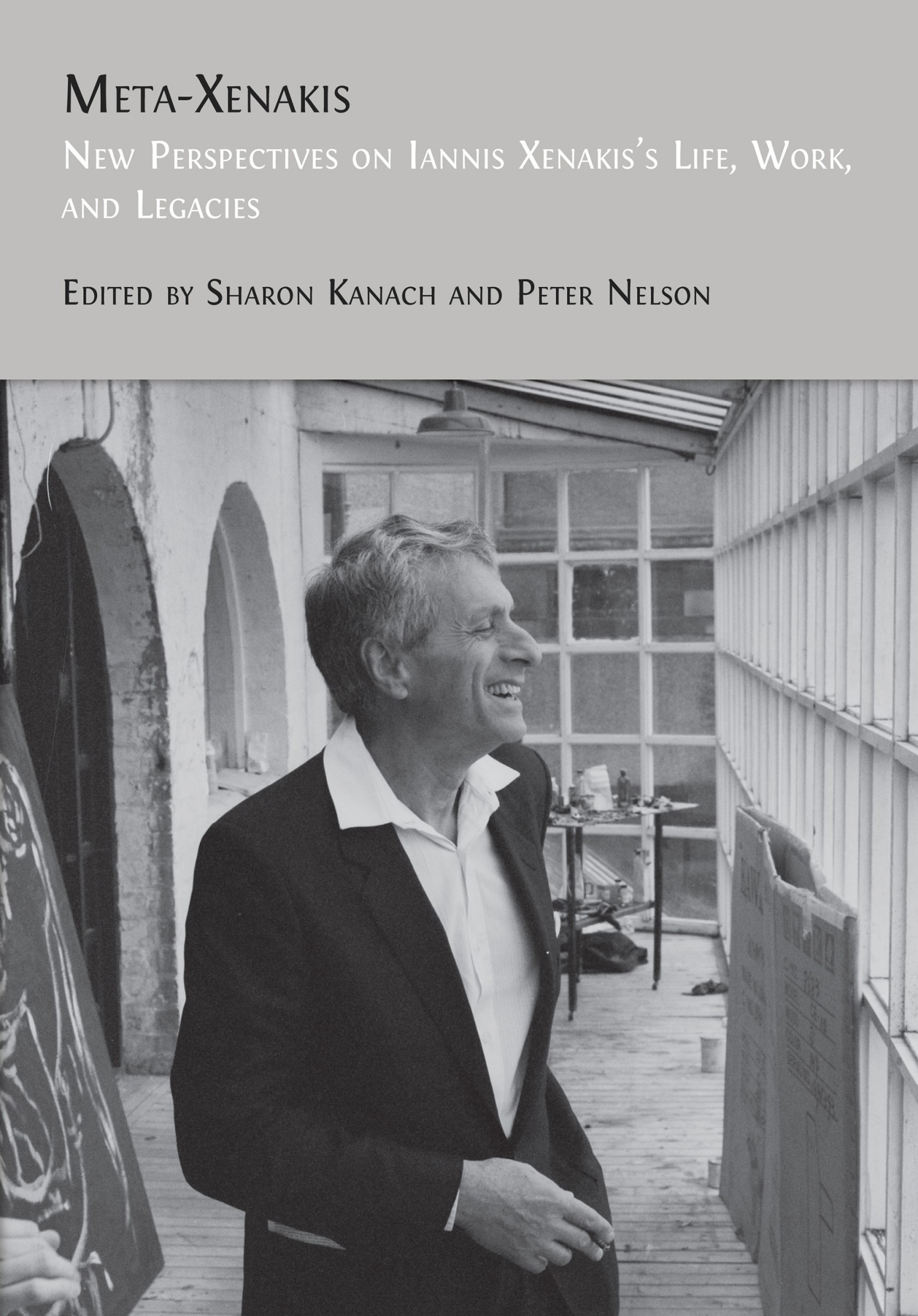Preface
The Meta-Xenakis Team Leaders
© 2024 The Meta-Xenakis Team Leaders, CC BY-NC 4.0 https://doi.org/10.11647/OBP.0390.00
[…] one can create a fantastic network of optimistic and pacifistic art throughout the world.
Never before has such a thing been feasible. Today it is.1
The year 2022 marked the centenary of the birth of Iannis Xenakis (1922), a true polymath, who left indelible traces with his own works in music and architecture as well as in his pioneering polytopes in the second half of the twentieth century.2 His visionary production, focused on the perspective of the arts and sciences as an alloy, continues to inspire artists today.
In the spirit of Xenakis’s optimism expressed in the epigraph above, beginning in 2020, the Centre Iannis Xenakis (CIX) at the Université de Rouen Normandie, France, and the KSYME (Contemporary Music Research Center) at the Athens Conservatoire, Greece, began brainstorming common events to celebrate the centenary of the composer, architect, theoretician, philosopher, and founder of their respective institutions. These events were scheduled to take place in 2022, and characterized as modest but meaningful, as many of us had had close ties with the composer over many years.3 Soon after though, we were joined by another former close collaborator and friend of Xenakis, our Mexican colleague Julio Estrada and his SUICREA research laboratory.4 In turn, Julio enlisted some of his former students and we swiftly partnered with our colleagues at the Nagoya City University, in Japan.5 It only made sense then to invite the Xenakis Project of the Americas (XPA) to participate as well, to make it a truly global manifestation.6 Our jointly organized Meta-Xenakis Consortium, spanning five countries and three continents, was therefore founded by several of Iannis Xenakis’s former students, collaborators, and dedicatees.7
Our common, ambitious goal became to create a truly transcontinental celebration of the life, work, and multiple legacies—both philosophic and artistic—of the true Renaissance man who was Iannis Xenakis. The main partners collaborated actively with other local artists, scholars, and institutions in each region, which resulted in multiple concerts, educational workshops, masterclasses, exhibitions, public lectures, a brand-new feature-length documentary film, as well as open calls and composition competitions, several of which are documented under the Sustainable Resources section in this volume.
One of the highlights of our events, thanks to the resources of post-pandemic interconnectivity, was the Meta-Xenakis Global Symposium, a forty-one-hour non-stop marathon (true to the Xenakian spirit of dépassement de soi) that took place between the morning of 30 September (in France) and the evening of 1 October 2022 (in Mexico) as a distributed collaboration between participants located in the five countries, in hybrid mode and live-streamed.
We are all delighted to share with a broader public these highlights of a truly unforgettable and transformational experience. And a special thank-you to all of the artists, scholars, and friends for their shared enthusiasms, as well to as all the Meta-Xenakis Consortium members and Associate Partners.8
References
XENAKIS, Iannis (2008), Music and Architecture: Architectural Projects, Texts, and Realizations, translated, compiled and presented by Sharon Kanach, Hillsdale, New York, Pendragon Press.
1 Xenakis and Kanach, 2008, p. 255. The original text, published posthumously, dates from 1974, a half a century ago!
2 “Polytope,” from the Greek poly-, or “several,” and -topos, “space.” In the mathematical literature, the term ‘polytope’ has come generally to mean different overlapping sets of objects. In Xenakis’s creative output, his five realized (and several unrealized) polytopes were all works where music, space, light, and architecture (or landscape, for his outdoor polytopes) were combined to create an immersive environment. For more information on his polytopes, see Xenakis 2008, Part Four.
3 Centre Iannis Xenakis, https://www.centre-iannis-xenakis.org/; KYSME, http://www.ksyme.org/
4 SUICREA, http://suicrea.unam.mx
6 “Xenakis Project of the Americas,” The Brook Center, https://brookcenter.gc.cuny.edu/projects/xenakis-project-of-the-americas/
7 Meta-Xenakis, https://meta-xenakis.org. Two committees were founded to brainstorm and put to execution all the Meta-Xenakis events. The Scientific and Artistic Committee comprised (local coordinators in bold): Rodolphe Bourotte, Angelica Cathariou, Juan Ignacio del Cueto, Cyrille Delhaye, Athanassios Economou, Julio Estrada, Teresa Frenk, Kiyoshi Furukawa, Nickos Harizanos, James Harley, Robert Hasegawa, Nikos Ioakeim, Toshie Kakinuma, Sharon Kanach, Kuniko Kato, David Lieberman, Apostolos Loufopoulos, Barbara Mackenzie, Stephanie Merakos, Mikako Mizuno, Marcos Novak, Lorenda Ramou, Curtis Roads, Evis Sammoutis, Ryosuke Shiina, Takehito Shimazu, Gabriella Spanó, Daniel Teige, Olga Touloumi, Nikos Tsouchlos, Panos Vlagopoulos, Jean-Noël von der Weid♰, Haris Xanthoudakis♰. The Organizational Committee comprised: Hubertus von Amelunxen, Marianna Anastasiou, Pierre Albert Castanet, Carla Delfos, Laurence Descubes, Itzíar Fadrique, Fabienne Fendrich, Conrad Harris, Ai Higashikawa, Jonathan Katz, Stella Kourmpana, Keita Matsumiya, Costas Mantzoros, Stephanie Merakos, Mikako Mizuno, Vivane Monel-Villa, Takeshi Mukaikuchi, Yoshihiko Nonomura, Benny Sluchin, Michèle Smith, Hugo Solís, Gabriella Spanó, Yoshihisa Suzuki, Katerina Tsioukra, Valia Vraka, Haris Xanthoudakis♰. The Meta-Xenakis Team Leaders were Stella Kourmpana (Greece), Mikako Mizuno (Japan), Julio Estrada (Mexico), Barbara Mackenzie (USA), Sharon Kanach (France).
8 “About,” Meta-Xenakis, https://meta-xenakis.org/about/
